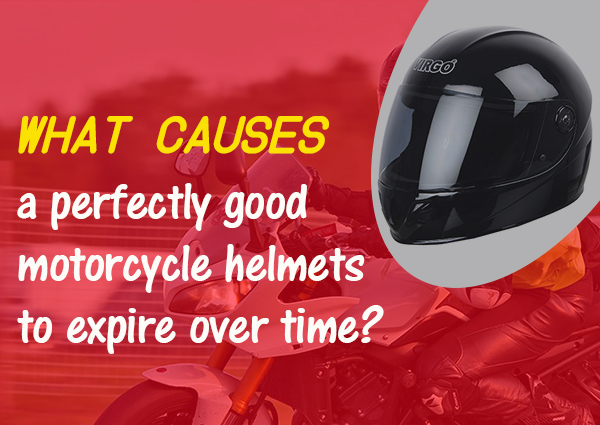What Causes a Perfectly Good Motorcycle Helmets to Expire Over Time
In the following we will be discussing an important topic that is “What causes perfectly good motorcycle helmets to expire over time?” and will discuss it in detail within the article. Why do motorcycle helmets expire? Which is actually quite a common question among many motorcycle newbies, and it is reasonably understandable. When you look at a helmet, it does not appear to resemble anything that we connect with as being biodegradable. However, it is. A helmet will change and lose effectiveness over the course of its life, and there are several reasons for that to occur.
In the following, we will be discussing an important topic that is what causes perfectly good motorcycle helmets to expire over time”. and will discuss it in detail within the article. Why do motorcycle
A helmet lifespan is dependent on a variety of factors. How often do you use your helmet? Where is it stored? What materials is it made from? Has it experienced any significant or minor impacts? All of the answers to these questions and more will help to determine the lifespan of a helmet, and even though many manufacturers claim a lifespan of seven years, that is also dependent on the responses to the above questions. However, when discussing the longevity and durability of your helmet, the lifespan depends mainly on its construction.
Helmet Construction
The production of helmets has evolved over the decades, going from metal to Kevlar and fiberglass and polycarbonate. Each of the iterations has been made and adapted to increase the protective quality and ensure that riders taking a spill don’t end up with significant brain-damage. While materials have changed over the years, the current standard is a combination of two segments: (1) the comfort liner or inner body and (2) the outer or hard shell.
Comfort Liner
The comfort liner is likely the reason for the motorcycle helmet expiration because it is made from EPS foam, which can lose its shape over time. However, foam also provides a soft and comfortable cushion for long-term use. Additionally, the foam interior provides a rider with a shock-absorbent pad necessary for softening the blow from a collision.
Outer Shell
The outer shell of a helmet is the most durable and resilient surface. It is typically made from a polycarbonate or a combination of fiberglass and Kevlar. However, you can also have pure fiberglass helmets as well. The shell is designed to be lightweight and to prevent the risk of penetration as a result of an abrasive collision. Therefore, the outer shell protects your head from obstacles and the inner liner protects it from impacts.
Expanded Polystyrene
As stated above, the comfort or inner liner of your helmet is likely the reason for helmet expiration. Expanded polystyrene or EPS foam is used for comfort liners because it is a durable and customizable substance. However, it is not an inflexible material, and it can lose shape and even volume over time. Therefore, it does need replacing. However, while it is not a perfect substance, it does provide advantages over other materials.
Rigidity
A problem with many protective choices is their rigidity. For example, a metal helmet without an inner foam cushion is likely too inflexible, leaving a rider to bear the full force of an accident. A helmet is designed similar to a bumper in that it is meant to absorb part of an impact. Being too rigid only creates another solid surface to collide with. However, some rigidity is necessary to prevent full contact. Foam is the perfect balance of rigid and soft because it is flexible while still maintaining form.
Cushion, Absorption, and Deceleration
The design and construction of foam mean that it is capable of compressing and absorbing impacts. This functionality of foam makes it unique in its ability to slow down and cushion collision. While the outer shell creates a brunt and impervious surface the EPS interior provides room for deceleration, making the accident less abrasive. However, while the foam is a superior substance for reducing the adverse effects of potential head trauma, the degradation of the material reduces the lifespan of a helmet. “How long are motorcycle helmets good?” is not a quite easy question to respond to, because the answer to such a question actually depends on some variables that are: integrity, storage as well as use.



